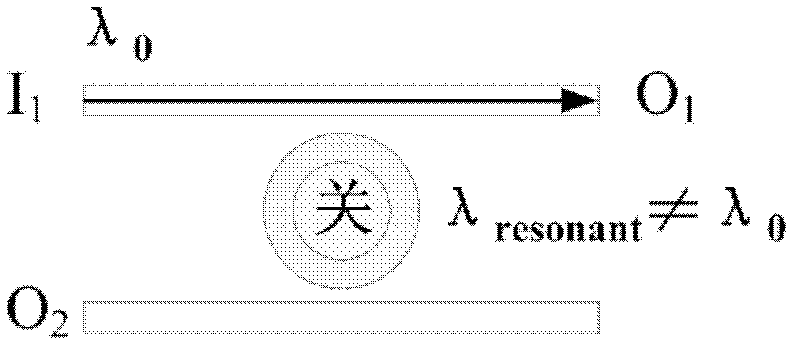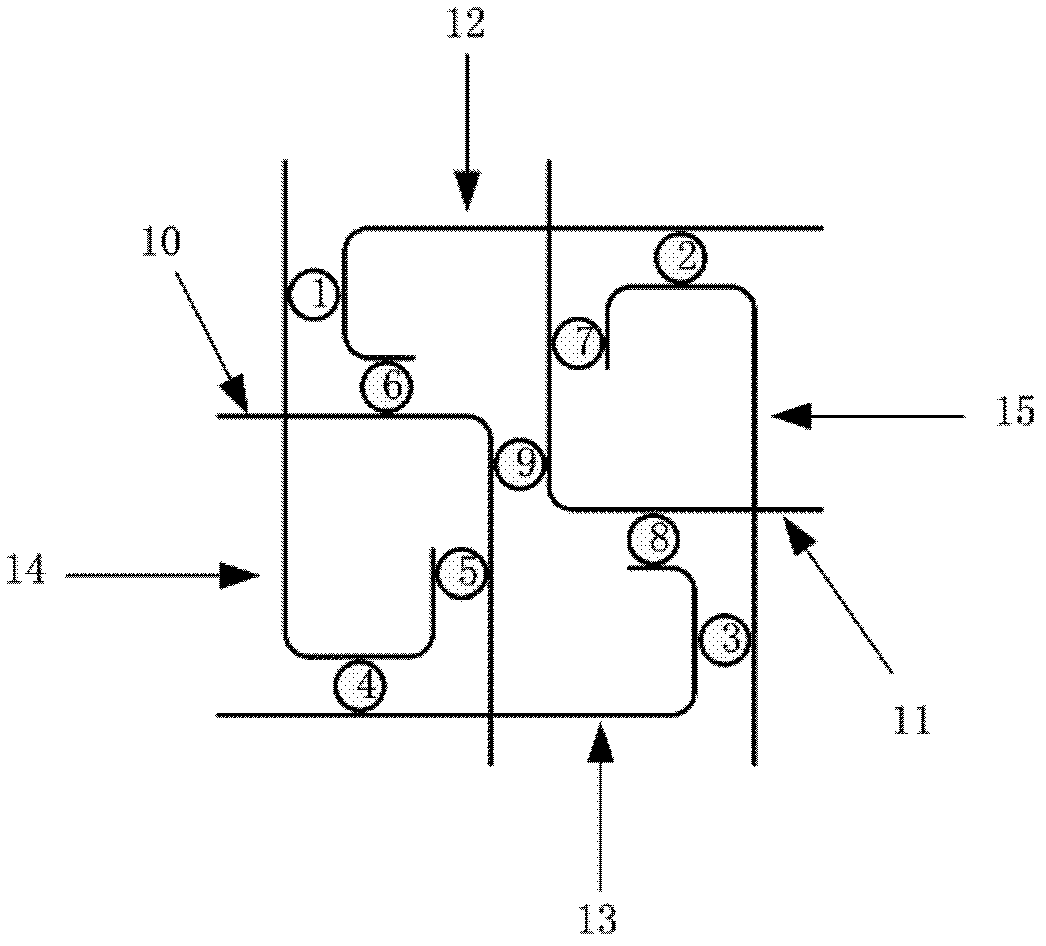Low-loss, low-crosstalk, four-port and non-blocking optical router based on micro-ring resonators
A micro-ring resonator, low-loss technology, applied in the field of node interconnection, can solve the problems of limited bandwidth, complex system, poor scalability, etc., and achieve the effect of reducing loss and crosstalk, and enhancing scalability
- Summary
- Abstract
- Description
- Claims
- Application Information
AI Technical Summary
Problems solved by technology
Method used
Image
Examples
Embodiment Construction
[0027] see figure 2 As shown, the present invention provides a four-port non-blocking optical router with low loss and low crosstalk based on a microring resonator, including:
[0028] - first and second feed-through optical waveguides 10, 11;
[0029] - first and second input optical waveguides 12, 13;
[0030] - first and second output optical waveguides 14, 15;
[0031] - first, second, third, fourth, fifth, sixth, seventh, eighth and ninth microring resonators 1, 2, 3, 4, 5, 6, 7, 8, 9, all The first to ninth microring resonators 1, 2, 3, 4, 5, 6, 7, 8, and 9 have the same radius, and the first to ninth microring resonators 1, 2, 3 , 4, 5, 6, 7, 8, and 9 work at the same wavelength. Such as Figure 1a and 1b As shown, the operating state of the microring resonator changes with the resonant wavelength of the microring resonator, when the resonant wavelength λ of the microring resonator resonant equal to the operating wavelength λ 0 At this time, the switch is in the...
PUM
 Login to View More
Login to View More Abstract
Description
Claims
Application Information
 Login to View More
Login to View More - R&D
- Intellectual Property
- Life Sciences
- Materials
- Tech Scout
- Unparalleled Data Quality
- Higher Quality Content
- 60% Fewer Hallucinations
Browse by: Latest US Patents, China's latest patents, Technical Efficacy Thesaurus, Application Domain, Technology Topic, Popular Technical Reports.
© 2025 PatSnap. All rights reserved.Legal|Privacy policy|Modern Slavery Act Transparency Statement|Sitemap|About US| Contact US: help@patsnap.com



